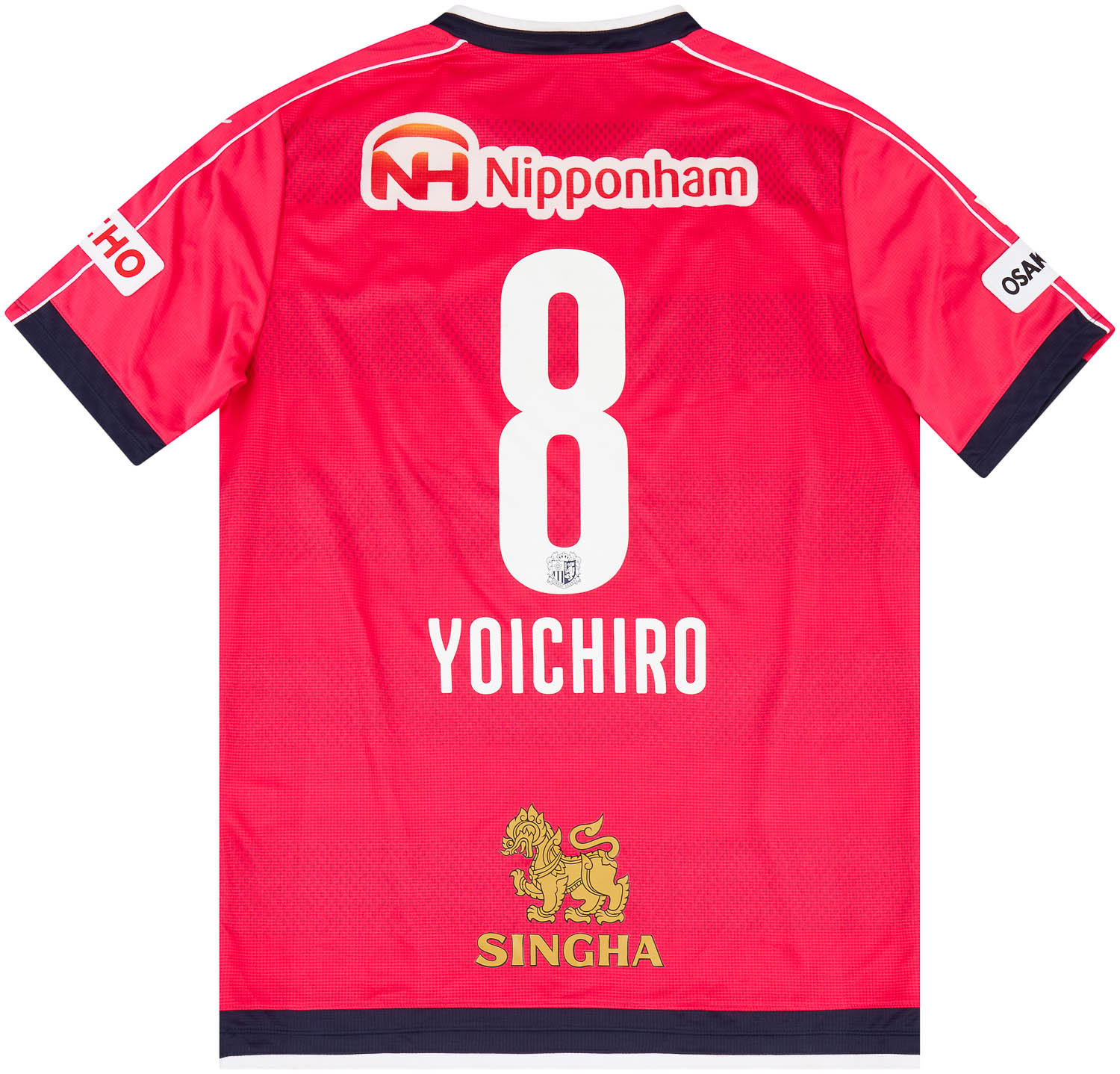Cerezo Osaka
Introduction Cerezo Osaka, a vibrant fixture of Japanese football, is more than just a football club; it’s an emblem of the local community in Osaka. Founded in 1957, Cerezo Osaka has become synonymous with the beautiful game in Japan, capturing the hearts of fans with its exciting style of play and commitment to community engagement. […]
2016 Cerezo Osaka Match Issue Home Shirt Yoichiro #8
118.99£ - ca: €140
2024 Cerezo Osaka Home Shirt
94.99£ - ca: €112
2013 Cerezo Osaka Away Shirt - 7/10 - (M)
82.99£ - ca: €98
2015-16 Cerezo Osaka Home Shirt - 7/10 - (S)
59.99£ - ca: €71
Introduction
Cerezo Osaka, a vibrant fixture of Japanese football, is more than just a football club; it’s an emblem of the local community in Osaka. Founded in 1957, Cerezo Osaka has become synonymous with the beautiful game in Japan, capturing the hearts of fans with its exciting style of play and commitment to community engagement. The club’s distinctive pink and white colors symbolize its identity and mission, leaving a significant mark both on and off the pitch.
Club History
Cerezo Osaka originated as Yanmar Diesel, a corporate team formed to promote the sport within the region. In 1993, when Japan’s top football league, the J. League, was established, the team rebranded itself as Cerezo Osaka. The name “Cerezo,” which means “cherry blossom” in Spanish, reflects the beauty of the cherry blossoms that bloom in Osaka Prefecture each spring, symbolizing the club’s aspirations and resilience. Throughout its history, Cerezo has undergone various challenges and transformations, evolving into the professional club it is today. Key moments include the introduction of a youth academy in the 1990s that has successfully nurtured talent and the expansion of its fanbase, both locally and internationally.
Achievements
Cerezo Osaka has a commendable record in domestic and international competitions. The club secured its first major honor in 1967, winning the Emperor’s Cup, a prestigious knockout tournament in Japanese football. This was a significant achievement that laid the groundwork for future successes. Over the years, Cerezo has won multiple editions of the Emperor’s Cup, including in 1970 and 1993, as well as the J. League Cup in 2017, showcasing their competitive spirit.
Internationally, Cerezo Osaka made its mark by competing in the AFC Champions League, where they have reached the knockout stages multiple times. One noteworthy achievement was in 2003 when they became the first Japanese team to reach the quarter-finals of the tournament, which earned them acclaim and respect across Asia. The club’s dedication to developing a competitive squad has seen them finishing in the top tiers of the J. League consistently, cementing their place in Japan’s football history.
Significant Players and Matches
Throughout its history, Cerezo Osaka has been home to numerous notable players who have made significant contributions to the club’s success. Legendary striker and club icon, Toshiya Fujita, is known for his explosive playing style and key goals. His tenure was instrumental during the late 1990s and early 2000s and solidified his place in the fans’ hearts.
Another significant player includes Brazilian midfielder, Leandro, who played a pivotal role in the club’s 2008 campaign, leading them to a successful season with notable performances. The team has also produced outstanding talents from its youth academy, such as Gaku Shibasaki, who made waves not only in the J. League but also in international competitions.
Landmark matches, such as the intense rivalry clashes against Gamba Osaka in the Osaka Derby, have become a staple of Cerezo’s history. These matches are characterized by high-stakes drama, electrifying atmosphere, and passionate fan engagement, reminding everyone of the rivalry’s cultural significance in Japanese football.
Cultural Impact
Cerezo Osaka’s influence extends beyond the football pitch into the cultural fabric of Osaka. The club has fostered a strong sense of community, regularly engaging with local schools and soccer academies. Their initiatives promote youth involvement in sports, making football accessible to children and nurturing the next generation of players.
Fans, known as “Cerezo family,” play a vital role in creating an electric atmosphere during matches at the Yanmar Stadium Nagai. The strong fanbase is characterized by unwavering loyalty, creating beautiful displays of support during J. League games and cup competitions. Cerezo Osaka matches are more than just games; they are cultural events where fans come together, showcasing local pride and passion for football.
Conclusion
In summary, Cerezo Osaka stands as a significant pillar in the rich tapestry of Japanese football history. From its humble beginnings as Yanmar Diesel to becoming one of the most competitive teams in the J. League, the club continues to inspire and connect with its community. With notable achievements, iconic players, and a vibrant fan culture, Cerezo Osaka’s legacy is rooted deeply in Osaka and Japanese football, paving the way to an exciting future in the beautiful game.



